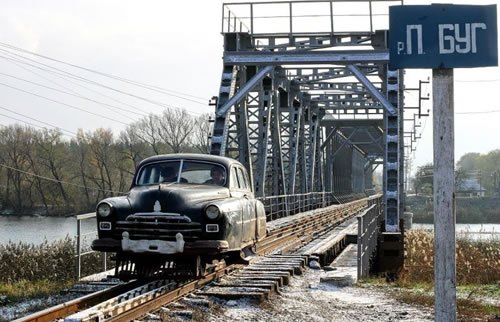Taxes Subsidize 6.9m Mass Transit Riders; Most Poor People Drive to Work
Despite the billions in federal and state taxpayer dollars poured into mass transit programs, only 6,908,323 working Americans take advantage of the subsidized service, according to US Census Bureau data released yesterday. The agency’s American Community Survey, a questionnaire mailed to three million households, found that 121,248,284 workers over the age of 16 regularly commuted to work by personal automobile or carpool last year. Despite the comparatively small number served by buses, subways and rail, the Obama Administration has made expanding mass transit a top priority. “President Obama’s vision of robust, high-speed rail service offers Americans the kind of travel options that throughout our history have contributed to economic growth and enhanced quality of life,” Transportation Secretary Ray LaHood said in April. “We simply can’t build the economy of the future on the transportation networks of the past.”
The stimulus bill poured $8 billion into the president’s proposed expansion of rail. Another $8.4 billion in taxpayer funds have been directed to “stimulate” mass transit on top of the existing federal money set aside for such programs. The president’s 2010 budget sought $42 billion for highway spending compared to $10.3 billion for mass transit programs that serve just five percent of the working public. The president strongly defended his priorities.
“Investing in mass transit and high-speed rail, for example, doesn’t just make our downtowns more livable; it helps our regional economies grow,” Obama explained in a July speech at an urban policy roundtable. “So you take an example like… Kansas City. One idea there focuses on transforming a low-income community into a national model of sustainability by weatherizing homes and building a green local transit system.”
The combined federal spending on transit this year represents a $2300 subsidy for each passenger, not including local and state funds devoted to such programs. Taxes on motorists, including a direct 2.9 cent per gallon federal levy on gasoline, are the primary source of funds for subway, bus and rail systems.
The census survey also showed that greater numbers of the working poor used cars and carpools to get to work than transit. A total of 17 percent of transit users reported incomes over $75,000 per year in income while only 10.6 percent fell below the poverty line.
A copy of the census results can be found in a 1.5mb PDF file at the source link below.
Means of Transportation to Work by Selected Characteristics (US Census Bureau, 10/27/2009)
[courtesy of thenewspaper.com]
More by The Newspaper
Latest Car Reviews
Read moreLatest Product Reviews
Read moreRecent Comments
- Formula m How many Hyundai and Kia’s do not have the original engine block it left the factory with 10yrs prior?
- 1995 SC I will say that year 29 has been a little spendy on my car (Motor Mounts, Injectors and a Supercharger Service since it had to come off for the injectors, ABS Pump and the tool to cycle the valves to bleed the system, Front Calipers, rear pinion seal, transmission service with a new pan that has a drain, a gaggle of capacitors to fix the ride control module and a replacement amplifier for the stereo. Still needs an exhaust manifold gasket. The front end got serviced in year 28. On the plus side blank cassettes are increasingly easy to find so I have a solid collection of 90 minute playlists.
- MaintenanceCosts My own experiences with, well, maintenance costs:Chevy Bolt, ownership from new to 4.5 years, ~$400*Toyota Highlander Hybrid, ownership from 3.5 to 8 years, ~$2400BMW 335i Convertible, ownership from 11.5 to 13 years, ~$1200Acura Legend, ownership from 20 to 29 years, ~$11,500***Includes a new 12V battery and a set of wiper blades. In fairness, bigger bills for coolant and tire replacement are coming in year 5.**Includes replacement of all rubber parts, rebuild of entire suspension and steering system, and conversion of car to OEM 16" wheel set, among other things
- Jeff Tesla should not be allowed to call its system Full Self-Driving. Very dangerous and misleading.
- Slavuta America, the evil totalitarian police state


































Comments
Join the conversation
geeber: When heading into Philly, I take the train, which takes slightly longer and is surely more expensive (for me) just to avoid the Sure-Kill. It's typically worse than L.A. traffic. Going to D.C. can be silly. The beltway routes are more jammed shut than downtown, and using the Interstates that take you within blocks of the White House is faster than fighting the daily suburban transhumance. I'm happy to pay for mass transit systems. It frees up the roads and gives me some options (some times). If we're worried about highway maintenance we need to have a different conversation, one about heavy multi-axle trucks, since they are responsible for nearly all surface wear.
@FreedMike, My only beef with your otherwise dead-on post is your city size estimates. Seattle isn't "twice the size" of Denver. ;) Good post. And for the guy who says Fed money isn't used for highways outside of the stimulus, you'd be wrong.